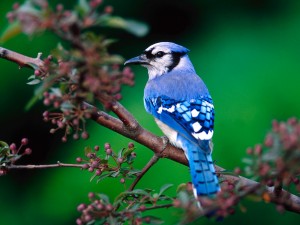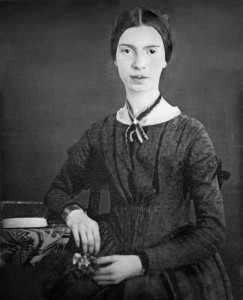[254]
“Hope” is the thing with feathers —
That perches in the soul —
And sings the tune without the words —
And never stops — at all —
And sweetest — in the Gale — is heard —
And sore must be the storm —
That could abash the little Bird
That kept so many warm —
I’ve heard it in the chillest land —
And on the strangest Sea —
Yet, never, in Extremity,
It asked a crumb — of Me.
“Hope is the Thing with feathers” was first published in 1891. Without ever actually using the word “bird” but once, Dickinson likens hope itself to a creature of flight. The language of the first two lines suggests the weightlessness that hope brings with it: the upward motion of the wind ruffling through feathers; the lightness of a tiny bird on its perch, ready at a moment’s notice to flutter away. 
The poem sings of the robust, enduring nature of hope. The picture of a tiny bird against gargantuan storms and gales reminds the reader of the immense power that even the smallest fragment of hope can hold, no matter how deep in the soul it is buried. Dickinson contrasts the “chill[y],” “strange” possibilities of the world we all face with the sweetness and warmth of the little bird.
The tone of this poem is quite characteristic of Dickinson. Although she spent much of her life in seclusion and her experiences were limited, she was a dreamer and many of her poems glowed with promise and possibility. “’Hope’ is the thing with feathers” simply and eloquently acknowledges the enduring human capability for hope.
Emily Dickinson (1830-1886) was born in Amherst, Massachusetts. She lived a quiet, secluded life and suffered occasionally from bouts of depression. Because the world she inhabited was small, her subject matter was limited but focused. Her garden was one of her greatest passions and appeared often in her writing. This seclusion also influenced her poetic voice – her poetry sings of the possibility of dreams not yet realized. Very few of Dickinson’s poems were published when she was alive, and the depth of her poetry was not known until her family discovered her collection of poems after her death. Today, Dickinson is one of the most appreciated American poets. She is often admired for her efficient yet brilliant word choice and for defying the rigidity in form that limited many writers before her, though she leans heavily on Common (or hymnal) measure, with its 8-6-8-6 syllables and abab (however slant or subverted) rhyme.
Johnson’s edition of The Complete Poems of Emily Dickinson is readily available (including with Amazon) and includes all 1775 of her poems. Her letters are available in his edition of Final Harvest.

